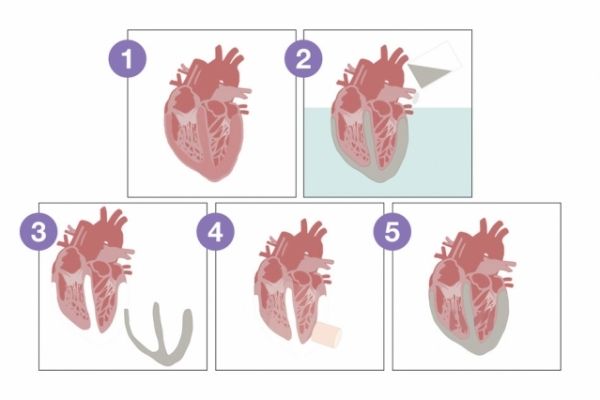As the geriatric population is expected to balloon in the coming decade, so too will rates of heart disease in the United States. The demand for prosthetic heart valves and other cardiac devices — a market that is valued at more than $5 billion dollars today — is predicted to rise by almost 13 percent in the next six years.
Prosthetic valves are designed to mimic a real, healthy heart valve in helping to circulate blood through the body. However, many of them have issues such as leakage around the valve, and engineers working to improve these designs must test them repeatedly, first in simple benchtop simulators, then in animal subjects, before reaching human trials — an arduous and expensive process.
Now engineers at MIT and elsewhere have developed a bionic “heart” that offers a more realistic model for testing out artificial valves and other cardiac devices.
Read more at Massachusetts Institute of Technology
Image: A preserved heart muscle (1) is removed and replaced with a soft synthetic matrix (2). The two structures (inner cardiac tissue and synthetic matrix) (3) are bonded using a newly developed adhesive, TissueSil (4). The resulting piece is the biohybrid heart containing the preserved intracardiac structures and synthetic heart muscle (5). CREDIT: Clara Park


